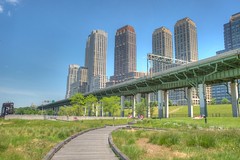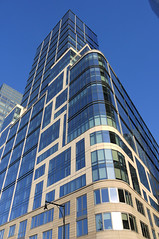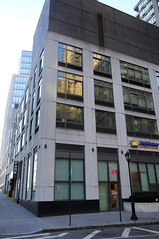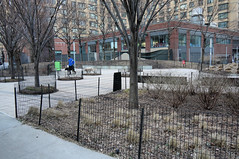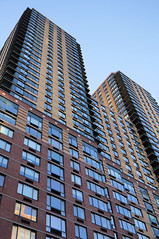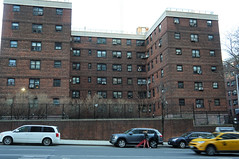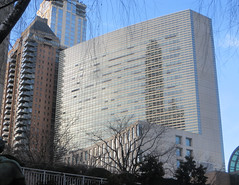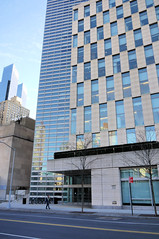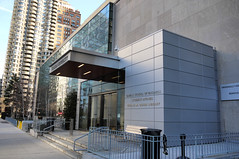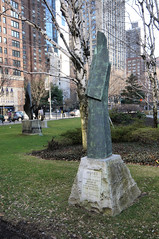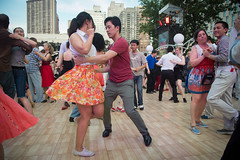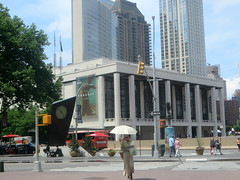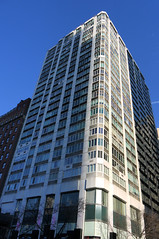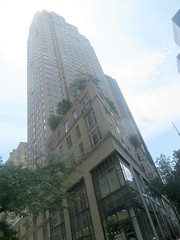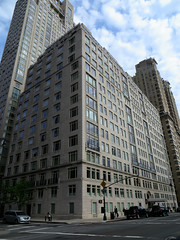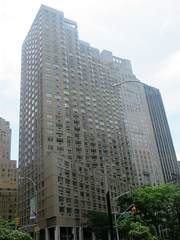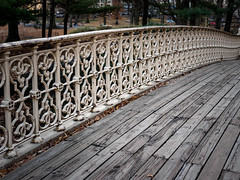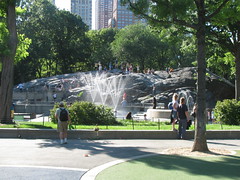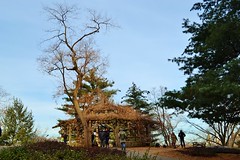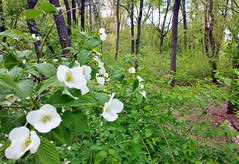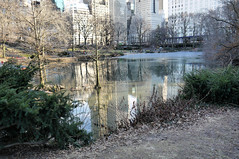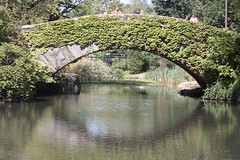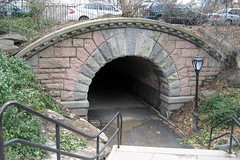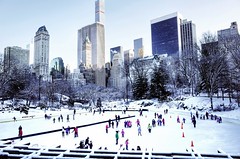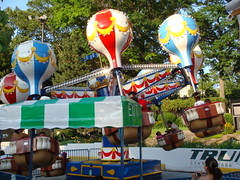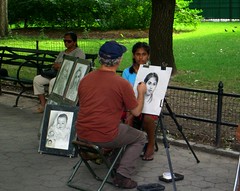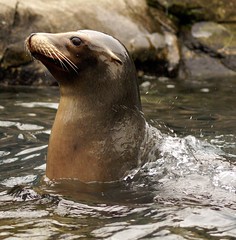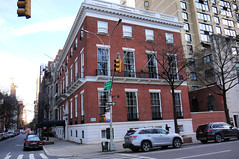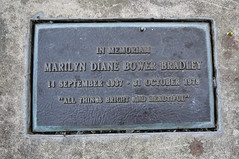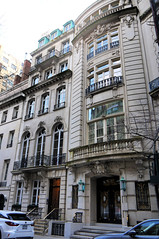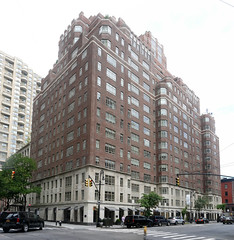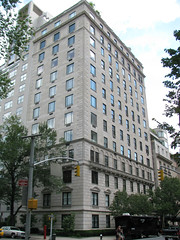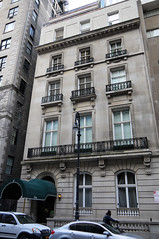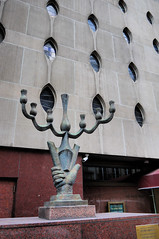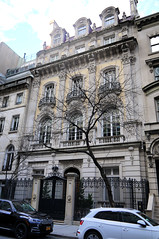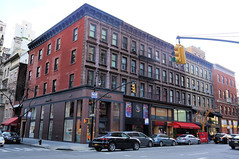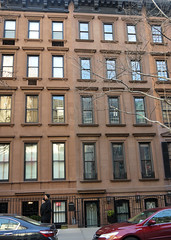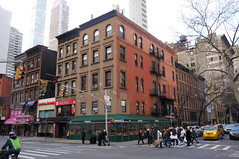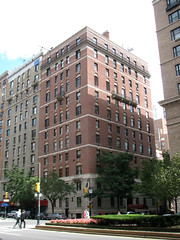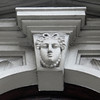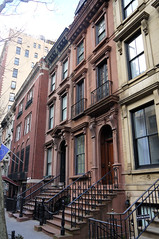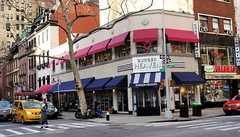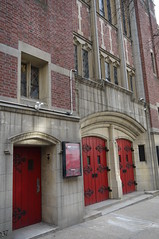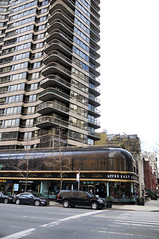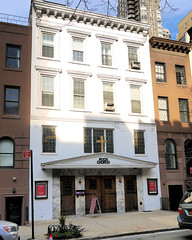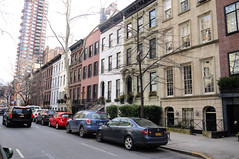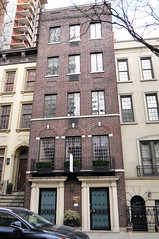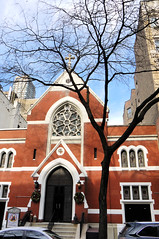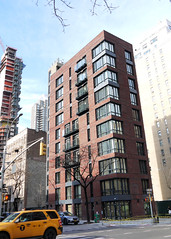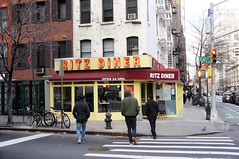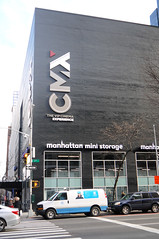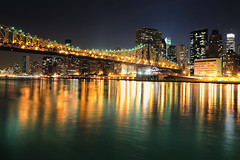South:
30 (corner) : Cumberland House, also known as 687 Madison,
a 16-story co-op from 1958. Bally is on the ground floor; formerly Anne Fontaine Paris boutique.
Formerly on the corner, at 689 Madison, was a house that
Theodore Roosevelt lived in from 1895-97 when he was New York City's
police commissioner. It was demolished in 1955 (NNY).
34: Vincent Astor, who as a college student inherited $87 million
when his father went down on the Titanic, in 1926 rented an apartment in a townhouse at this
address. Known as The Room,
it served as HQ for a private intelligence operation that reported to FDR--a friend of Astor's--after he became president in 1933. Members
of the spy club included Kermit Roosevelt, Marshall Field III, banker Winthrop Aldrich, publisher Nelson
Doubleday and naturalist Suydam Cutting.
On July 10, 2006, a gas explosion leveled the townhouse -- apparently
caused by owner
Nicholas Bartha, who was fatally wounded in the blast.
He had been ordered to sell the building and split the proceeds with his
ex-wife. The current townhouse on the site dates to 2017, though it
attempts to fit in with its much older neighbors.
The Links
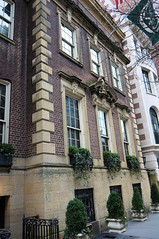
36: This golf-themed club was established in 1917, by noted golf course designer Charles Macdonald, in this Georgian Revival clubhouse drafted by Cross & Cross.
It's been
called "the most powerful club in the world"--its members included, in 1955,
President Dwight Eisenhower, Gov. Thomas Dewey, Sen. Prescott Bush, Henry Luce and
the heads of US Steel, ITT, AT&T, Westinghouse, Texaco, Monsanto, Boeing, Gulf, IBM, General Foods,
Chase Manhattan, Chemical Bank, City Bank, American Express, New York Life, etc.
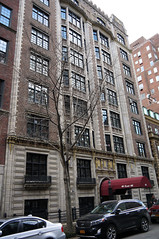
40: A 1911
neo-Medieval apartment building designed by Alfred Joseph Bodker, complete with a row of griffons on the facade. Plaza Hotel architect Henry Hardenbergh was
an early tenant; he died here in 1918. Another resident was Henry Fairfield Osborne, the paleontologist who named
Tyrannosaurus rex and Velociraptor; he was president of the American Museum of Natural History from 1908-33,
and of the New York Zoological Society from 1909-25.
52: Founded in 1888, this elite K-12 boys' school has been here since 1922.
Alums include VP candidate Sargent Shriver, Sen. Claiborne Pell, Cookie Monster creator Jeff Moss,
Vermont Gov. Howard Dean, NYT publisher Arthur Ochs Sulzberger Jr. and JPMorgan Chase CEO Jamie Dimon.
"Preppy Killer" Robert Chambers was
expelled from the school.

Corner (550 Park): A 17-story apartment building from 1917, designed by J.E.R. Carpenter (who was among the first residents). Comedian Danny Kaye lived here in the 1940s. Earlier on this site was the Yosemite, a seven-story 1891 co-op designed by McKim, Mead & White for the New York Life Insurance Company. Before that there was Holbrook Hall, an apartment building destroyed by fire.
|
 It was called the Muhhekunnetuk by the Mahicans, meaning the River
That Flows Both Ways--a reference to its formal status as an
estuary or fjord, a glacier-carved branch of the sea with salt water
as high as Newburgh and tides all the way up to Troy. Originally
known by the Dutch as the North River--as opposed to the South River,
now called the Delaware--its current name honors Henry Hudson,
the English explorer who sailed up it in 1609. He's also the namesake
of Hudson Bay, where mutinous crewmen left him to his presumed death.
It was called the Muhhekunnetuk by the Mahicans, meaning the River
That Flows Both Ways--a reference to its formal status as an
estuary or fjord, a glacier-carved branch of the sea with salt water
as high as Newburgh and tides all the way up to Troy. Originally
known by the Dutch as the North River--as opposed to the South River,
now called the Delaware--its current name honors Henry Hudson,
the English explorer who sailed up it in 1609. He's also the namesake
of Hudson Bay, where mutinous crewmen left him to his presumed death.
